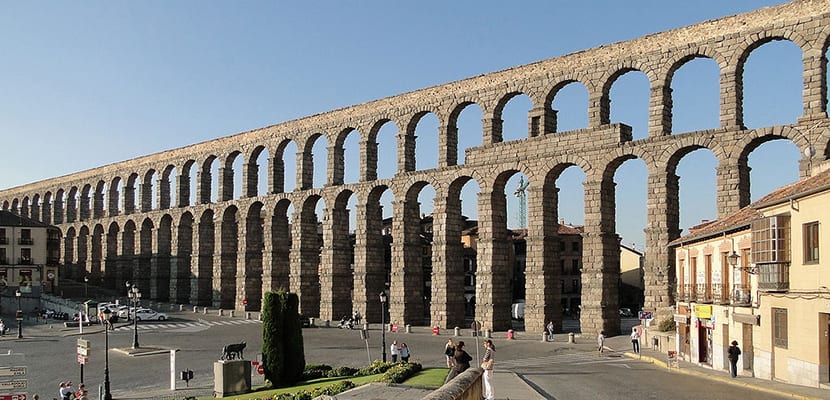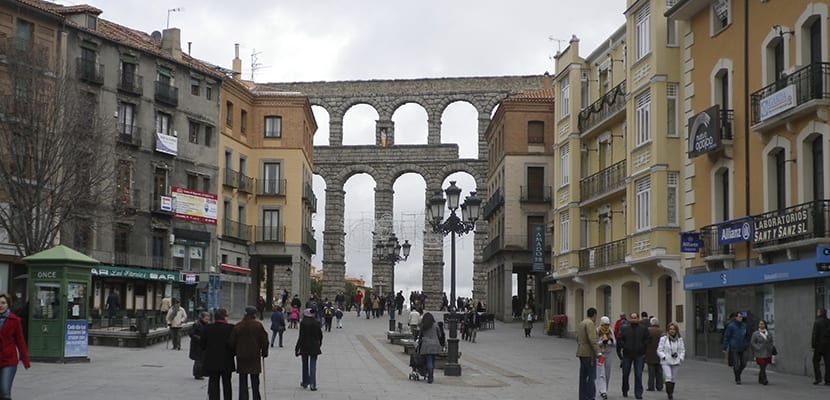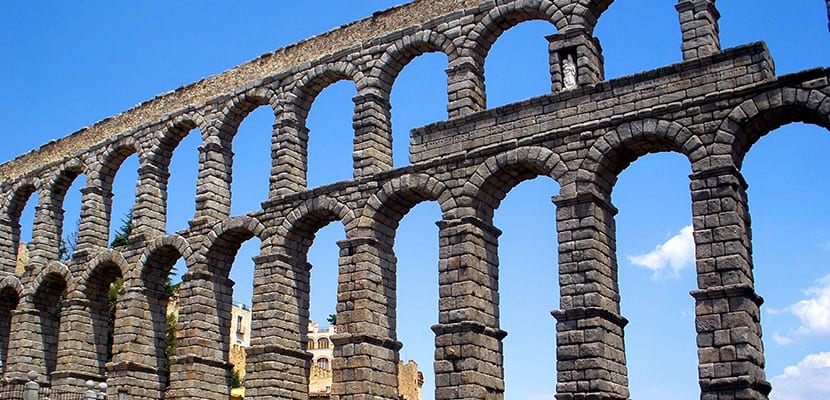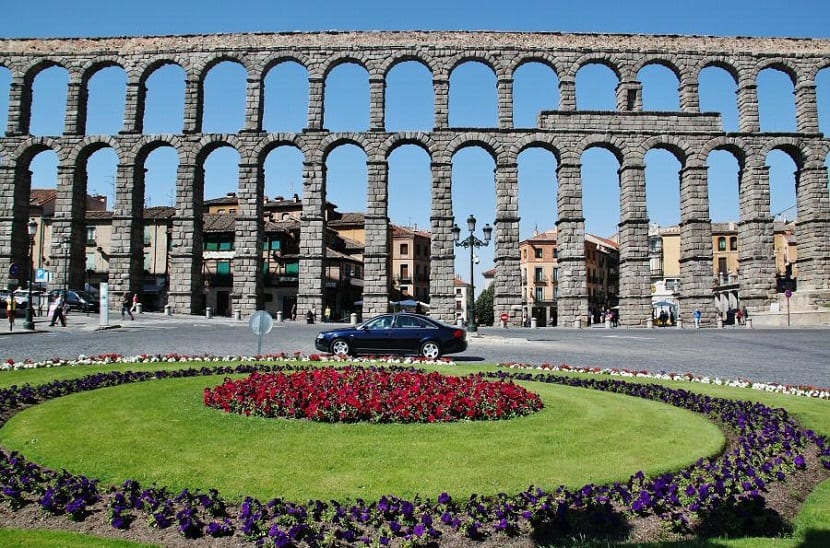
The philosopher María Zambrano used to say that "in Segovia the light does not settle from the sky, but is projected from the city itself" and she was right. The Castilian city contains so much history and so many beautiful monuments that its charm does not go unnoticed.
The silhouette of Segovia is drawn by the famous Roman aqueduct dating from the XNUMXst century during the government of Emperor Trajan. However, this town has Celtiberian origin although the Roman footprint is the one that retains the greatest weight today thanks to the icon that this construction has become.
Origin of the aqueduct
It owes its name to the union of two Latin words aqua (water) and ducere (to drive). Located in the heart of the city, the aqueduct was built in the XNUMXst century to bring water from the Sierra de Guadarrama to the town. Before its construction, the Roman engineers had to carry out a study of the terrain, its unevenness and the possibilities of the water route.
With the Plaza de la Artillería on the right and the Plaza del Azoguejo on the left, it seems that the aqueduct divides Segovia in two. But the truth is that the monumental construction coexists in harmony with the rest of the architecture of the city, where the Cathedral, the walls and the Alcazar deserve special mention. In the Plaza Mayor we can find the remains of one of the grits from Roman times, which was used to eradicate impurities from the water.

Characteristics of the aqueduct of Segovia
The function of the aqueduct was to transfer the precious water from the Fuenfría spring, 17 kilometers away, to Segovia. For this, this monumental work of Roman engineering was built with almost 30 meters high and 167 arches that took advantage of the unevenness of the land along 16.222 meters to supply the population.
The construction is divided into three different parts: The extra-urban area (where the water was collected), the peri-urban area (the section of the aqueduct that carried the water) and the urban area (where the water was conducted and distributed to its destination).
Once it arrived in Segovia, the water was collected in a cistern that received the name of 'El Caserón' and through a sophisticated distribution system made with compartments that were subdivided, water was supplied to the sources and the wells of the private houses.
What's more. The Segovia aqueduct had around 15 kilometers of underground pipes, between the catchment at the base of Sierra de Guadarrama and the suburb of the town, where the canal emerged over arches for approximately 800 meters.
But not only the water came from the Sierra de Guadarrama but also the granite stone blocks that were used for its construction.
When contemplating such a wonderful and ancient civil engineering work, many wonder how it could have stood the test of time in perfect condition. The Romans did not stitch without thread and the aqueduct is made up of 120 pillars that support the 167 arches made up of ashlars that are joined without any type of mortar. They are supported by a perfect study of the thrust forces between the stone blocks!
In 1999 it was declared an International Artistic Historical Monument of Civil Engineering, by the ASCE (American Society of Civil Engineers).

It was in use until recently
The Romans made such a work of art that the aqueduct was in use until recently with little change over the centuries.
Only during the Muslim attack on Segovia in 1072, some 36 bows suffered deterioration. The damage was restored by Fray Juan de Escobedo in the XNUMXth century.
From the beginning there have been two niches in the aqueduct where there were probably pagan gods but they were replaced by the images of San Sebastián and the Virgin in the time of the Catholic Monarchs. Under the niches there was a legend in bronze letters referring to the founding of the aqueduct, of which only the trace of the inscription remains today.

The legend of the aqueduct of Segovia
This legend tells that a girl sold her soul to the devil in exchange for the construction of the aqueduct so as not to have to go up and down every day to get water to the top of the mountain.
The devil accepted the deal but to take the girl's soul he had to finish it before the rooster crowed the next morning, which he did not achieve and the girl narrowly escaped such an unfortunate fate.